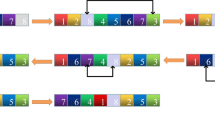Abstract
Steganography is the art of science of hiding information which is more useful in many social networks, digital media, and printing material. Many hiding algorithms are used to flourish the security level of the recent wireless multimedia system to protect the data from an attacker. This paper describes about existing steganographic based hiding methods using LSB techniques, RSA algorithm, DNA cryptography and DNA steganography, which is used to prevent copying, forgery and unauthorized access of videos, audios and images. Existing hiding methods had demerit of increased key size, computational cost, speed and size of the input. Thus the DNA steganography based Hyperelliptic Curve Cryptography (HECC) is proposed which provides a higher level of security to image file and also assure the digital media security. The proposed HECC based DNA steganography is compared with traditional cryptographic techniques results in 30 and 42 % increased processing time for encryption process and decryption process respectively. Finally, the proposed scheme is compared with other traditional steganographic technique in terms of Mean Square Error, Peak Signal to Noise Ratio (PSNR), embedding capacity. From the simulation results, it is inferred that, the proposed steganographic method has, the less embedding capacity, high MSR and PSNR value compared with other steganographic methods.

























Similar content being viewed by others
References
Johnson, N.F., Duric, Z., Jajodia, S., & Memon, N. (2001). Information hiding: Steganography and watermarking—Attacks and countermeasures. Journal of Electronic Imaging 10: 825. SPIE-Intl Soc Optical Eng. doi:10.1117/1.1388610.
Nagaraj, V., Vijayalakshmi, V., & Zayaraz, G. (2013). Overview of digital steganography methods and its applications. IJAST, 60, 45–58.
Manoj, I. (2010). Cryptography and steganography. International Journal of Computer Applications, 1(12), 63–68.
Artz, D. (2001). Digital steganography: Hiding data within data. IEEE Internet Computing, 5(3), 75–80.
Swanson, M., Kobayashi, M., & Tewfik, A. (1998). Multimedia data-embedding and watermarking technologies. Proceedings of the IEEE, 86(6), 1064–1087.
Torkaman, M.R.N., Nikfard, P., Kazazi, N.S., Abbasy, M.R., & Tabatabaiee, S.F. (2011) Improving hybrid cryptosystems with DNA steganography. In Proceedings of the international conference on digital enterprise and information systems, pp. 42–52, Springer Book Pubisher, July 20–22, 2011.
Hamed, G., Marey, M., El-Sayed, S., & Tolba, F. (2015) DNA based steganography: Survey and analysis for parameters optimization. In Applications of intelligent optimization in biology and medicine, vol. 96 of the series Intelligent Systems Reference Library, pp. 47–89, Springer Publisher.
Tawalbeh, L., Mowafi, M., & Aljoby, W. (2013). Use of elliptic curve cryptography for multimedia encryption. IET Information Security, 7(2), 67–74.
Wollinger, T., Pelzl, J., & Paar, C. (2005). Cantor versus Harley: optimization and analysis of explicit formulae for hyperelliptic curve cryptosystems. IEEE Transactions on Computers, 54(7), 861–872.
Gehani, A., LaBean, T., & Reif, J. (2004) DNA based cryptography. In Aspects of Molecular Computing Volume 2950 of the series Lecture Notes in Computer Science, pp 167–188.
Beck, M., & Yampolskiy, R. (2012). DNA as a medium for hiding data. BMC Bioinformatics, 13(12), A23.
Xiao, G., Lu, M., Qin, L., & Lai, X. (2006). New field of cryptography: DNA cryptography. Chinese Science Bulletin, 51(12), 1413–1420.
Chakraborty, S., Roy S., & Bandyopadhyay, K. (2012) Image steganography using DNA sequence and sudoku solution matrix. International Journal of Advanced Research in Computer Science and Software Engineering 2(2), 117–122.
Balado, F. (2013). Capacity of DNA data embedding under substitution mutations. IEEE Transaction on Information Theory, 59(2), 928–941.
Das, P., Deb, S., Kar, N., & Bhattacharya, B. (2015). An Improved DNA based dual cover steganography. Elsevier Procedia Computer Science, 46, 604–611.
Torkaman, M. R. N., Kazazi, N. S., & Rouddini, A. (2012). Innovative approach to improve hybrid cryptography by using DNA steganography. International Journal on New Computer Architectures and their Applications, 2(1), 224–235.
Khalifa, A., & Atito, A. (2012) High-capacity DNA-based steganography. In Proceedings of international conference on informatics and systems, pp. 76–80.
Author information
Authors and Affiliations
Corresponding author
Rights and permissions
About this article
Cite this article
Vijayakumar, P., Vijayalakshmi, V. & Zayaraz, G. An Improved Level of Security for DNA Steganography Using Hyperelliptic Curve Cryptography. Wireless Pers Commun 89, 1221–1242 (2016). https://doi.org/10.1007/s11277-016-3313-x
Published:
Issue Date:
DOI: https://doi.org/10.1007/s11277-016-3313-x




